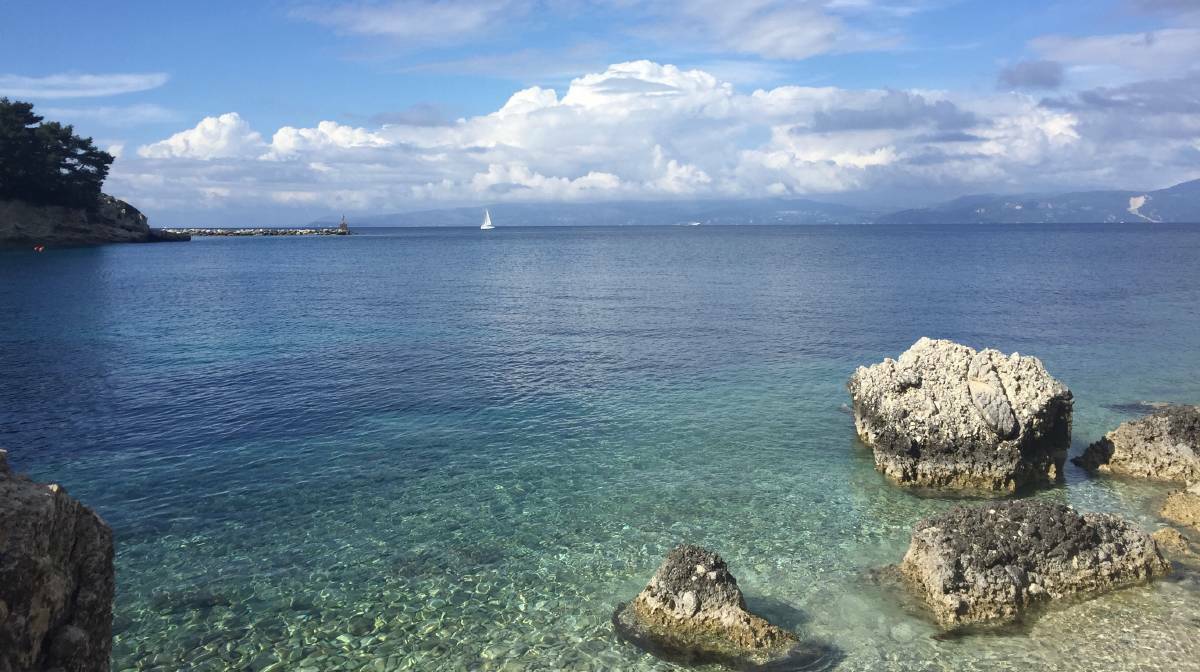Fireflies, olive groves, and traditional seafood dishes – the Greek Island of Paxos offers a quieter experience than some of its more famous neighbours.
The predictions about when we will be able to take our next overseas holiday seem to grow more pessimistic by the day, which makes it even more important to be dreaming of future getaways in a post-COVID world.
Create a free account to read this article
$0/
(min cost $0)
or signup to continue reading
I often think the time spent researching a trip is almost as enjoyable as going – and time is the one thing a lot of us have at the moment.
There are certainly worse ways to while away the hours than googling options for a Greek Island stopover, weighing up the relative charms of pebble beaches, glittering blue waters, colourful ports and whitewashed stone villages.

The thing about the Greek Islands is you could technically go there 200 times and visit a different island each time.
Well, OK, I’ve only been there twice. The first time, like so many before me, I went to the beautiful Santorini which lived up to its own publicity with its striking blue domes against white buildings nestled in the cliffs.
This time, my visit was the last stop at the end of a six week trip to Ireland and Italy, and I was looking for somewhere with a bit more nature per person, per square metre than the more high profile destinations.
While Paxos was listed as one of the smaller and quieter destinations, in the end it was the promise of fireflies that caused me to swipe right.
Google told me that for a few short weeks in Spring, coinciding with my visit, fireflies could be glimpsed swirling among the olive groves. While not guaranteed, I decided it was a risk I was prepared to take.
Paxos is one of the seven Ionion Islands, only eleven kilometres long and home to 2,500 permanent residents.
In Greek mythology, the island was created when Poseidon sliced a piece off from Corfu with his spear, to create a hideaway for himself and his mistress.
In getting there, I began to think Poseidon was still exerting his powers to keep people away from his love nest.
The first leg was via a chaotic Air Agean flight from Athens to Corfu which was delayed on the tarmac due to a technical problem. The plane-full of Greek passengers responded to this announcement by rising up from their seats, yelling and shaking their fists. The captain yelled back, in both English and Greek, and some passengers demanded to be disembarked, a request which, oddly, was accommodated. Finally, after much waving of hands and kissing of crucifixes, we took off.
We landed an hour later in Corfu to riotous applause. The driver who picked us up told us that people from Corfu had a reputation for being “mad”, and that over on Paxos they were even worse.

After those encouraging words, and a ferry delayed for five hours in pouring rain, we finally set off for Paxos.
The crew members took it in turns to steer the ferry, while the rest sat around on the lower deck playing cards and smoking, and selling us cups of cask wine for two euros a pop.
We finally made it to our airbnb high up in the hills of Dendiatika in the centre of Paxos. The weather cleared the next day to reveal a picture postcard view.
From our digs, a stroll down the stone walled path led to the smallest of the three villages on the island, Loggos, where family run restaurants and tavernas line the pretty waterfront.
From morning coffee, to afternoon cocktails and spectacular seafood dinners, it was hard to get motivated to move away from the mesmerising view offered by the quiet little harbour with its boats bobbing on sparkling water.
From Loggos you can take a bus to the other villages; Lakka, a favourite with foodies, and the vibrant port town of Gaios with its bustling town square, cafes, restaurants and tourist shops. Aside from the bus, as the sign in Gaios informs you, a taxi, driven by either Christos, Haris, Nikos, Tasos or Costas, can easily be summoned at any hour.
Just outside of the high season, Paxos had an unhurried atmosphere and the only other tourists we met were British. The place is clearly a favourite of the Brits, many who told us they have been holidaying in Paxos for decades. They were cheerful and friendly, as were the locals, and I sometimes felt like I was on the set of the movie “Shirley Valentine”.
Paxos traditionally survived on fishing and making olive oil, and the island is covered in olive groves. The villages are linked by a maze of paths lined with rough stone walls where you can walk for hours barely seeing a soul. A good walk is from Dendiatika to the stunning beach of Monodendri, then on along the goat tracks to Lakka.
Each of the villages has a bakery serving rustic bread made in wood ovens, and traditional pastries particular to Paxos. The restaurants, not surprisingly, specialise in seafood, and we enjoyed dishes such as chargrilled cuttlefish, parmesan crusted kingfish and linguine with squid ink sauce, all served with simple, fresh salads.
At the popular Vassilis Taverna the waiter was a well-travelled sommelier who was extremely knowledgeable about Australian wines. We also tried many of his local suggestions before weaving our way back up the hillside to Dendiatika.
It was a warm night and I sat for a while on a stone wall in the moonlight looking out into the silvery olive grove. It was then I saw the fireflies, silently darting like tiny comets among the trees. Paxos had delivered.




